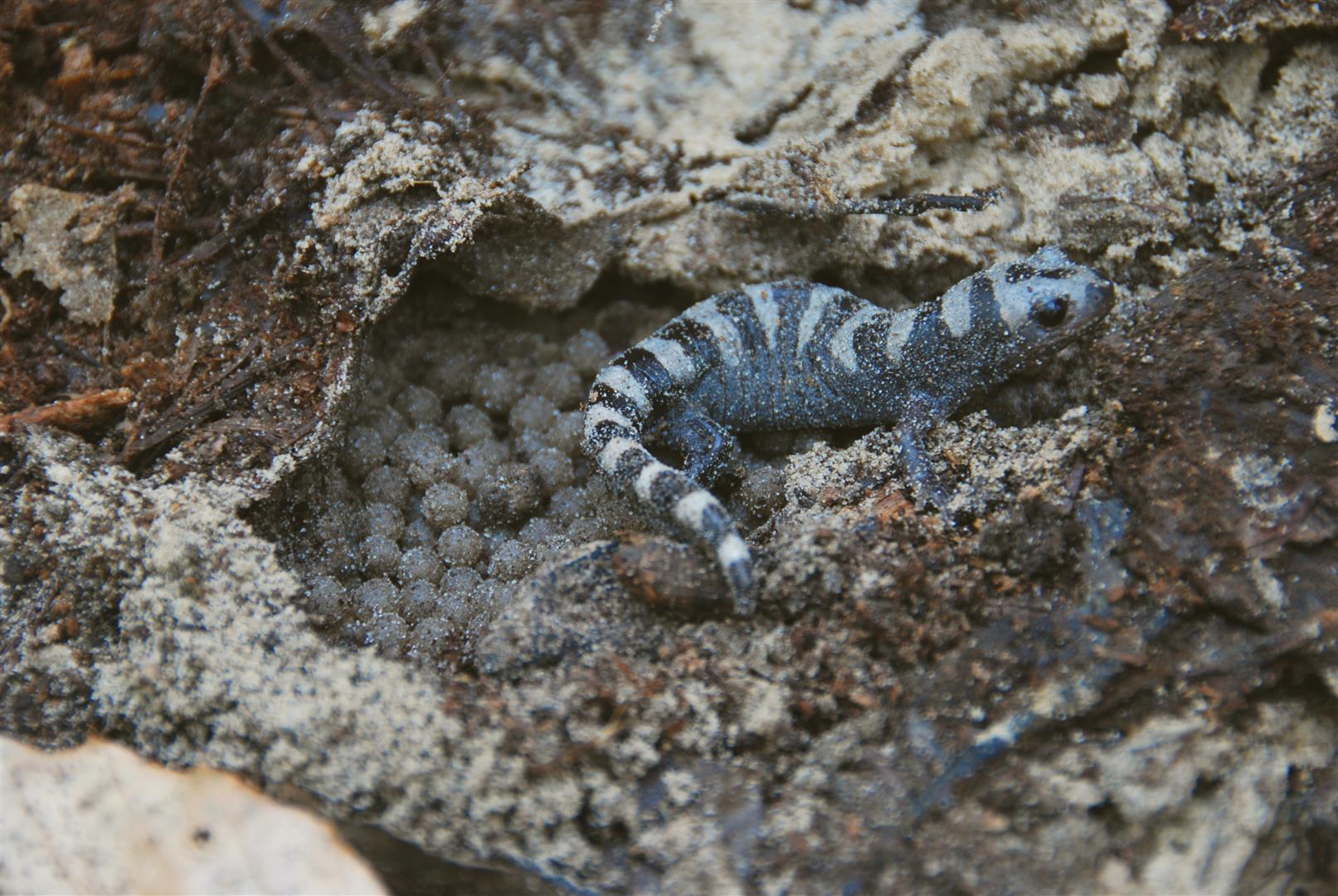Reproductive biology of Ambystoma salamanders in the southeastern United States
Abstract/Summary
Reproductive aspects of Ambystoma salamanders were investigated at a site in Louisiana (2010–2012) and a site in Mississippi (2013). Three species occurred at the Louisiana site, Spotted Salamander (A. maculatum), Marbled Salamander (A. opacum), and Mole Salamander (A. talpoideum), whereas only Spotted Salamanders were studied at the Mississippi site. A total of 162 and 71 egg masses of Spotted Salamanders were examined at the Louisiana and Mississippi sites, respectively. Significantly more Spotted Salamander eggs per mass were observed at the Mississippi site (78.2) than the Louisiana site (53.8; p<0.001). The mean snout-vent length of female Spotted Salamanders at the Mississippi site (82.9 mm) was significantly larger than the Louisiana site (76.1 mm; p<0.001). Opaque Spotted Salamander egg masses were not found at the Mississippi site, but accounted for 11% of examined egg masses at the Louisiana site. The mean number of eggs per mass at the Louisiana site did not differ between opaque (47.3) and clear (54.6) egg masses (p=0.21). A total of 47 egg masses of the Mole Salamander were examined, with a mean number of 6.7 embryos per mass. Twenty-three individual nests of the Marbled Salamander were found either under or in decaying logs in the dry pond basins. There was no difference between the mean numbers of eggs per mass of attended nests (93.0) versus those that were discovered unattended (86.6; p=0.67). Females tended to place their nests at intermediate heights within the pond basin.
Publication details
| Published Date: | 2015-06-16 |
| Outlet/Publisher: | Herpetology Notes 8:347-356 |
| Media Format: |
ARMI Organizational Units:
South Central - BiologyTopics:
Species and their EcologyPlace Names:
Kisatchie National ForestLouisiana
Mississippi
Natchez Trace Parkway
Keywords:
amphibiansecology
pond-breeding amphibians
reproduction
wetlands

